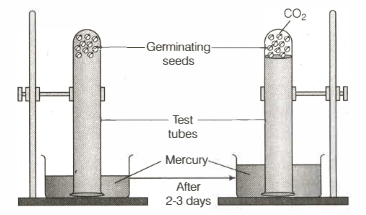Respiration in Plants and Related Experiments
Respiration in Plants and Related Experiments: Overview
Within this topic, we will study the concept of respiration in plants. We will unfold the details of the various experiments involved in respiration. We will understand the fact that heat is evolved during respiration through an experiment.
Important Questions on Respiration in Plants and Related Experiments
Compare and write a note on aerobic and anaerobic respiration.
Explain the experiment to show oxygen is used up respiration.
Write a note on glycolysis.
Which of the following reactions are related to anaerobic respiration?
Find the term/ terms unrelated to glycolysis from the following.
Which of the following statements is/ are correct about anaerobic respiration?
Which of the following is released during anaerobic respiration?
Respiration can occur in the absence of oxygen in

In the above diagram, we find out that CO2 gas is collected at the top of the test-tube. Which biochemical process is responsible for the production of this gas? (Write in one word)
The normal roots of the mangrove plants are unable to breathe in the marshy saline soil. They have additional negatively geotropic roots to help in gaseous exchange. What are these roots called?
Pyruvate is formed during the Krebs cycle.
When CO2 passes through lime water, no change is observed.
Anaerobic respiration in animals produces lactic acid.
'ATP' stands for Adenine triphosphorus.
Yeast can be used to conduct the experiment related to anaerobic respiration.
During the process of anaerobic respiration, carbon dioxide is released. If it passes through the tube of lime water, the colour of lime water becomes pink.
Where does Kreb's cycle occur in a cell?
Another term given for anerobic respiration in plants.
Part of aerobic respiration that occurs after glycolysis. (Krebs cycle/ Fermentation/ Oxidative phosphorylation)
A phase of aerobic respiration that does not need oxygen.
